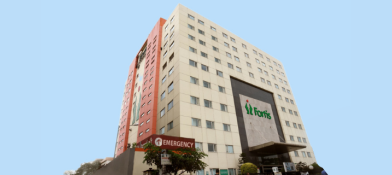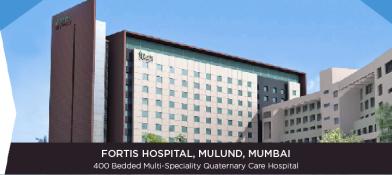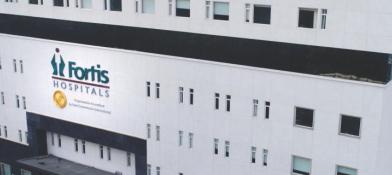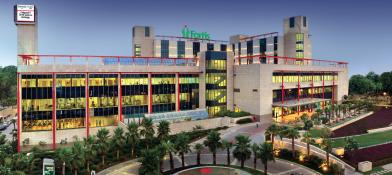The introduction of Robotic Surgery to the field of Gynecology has resulted in major changes in surgical management of gynecological conditions USFDA approved Robotic Surgical System in 2005 for gynecological surgery and since then it has been rapidly adopted by Gynae Onco Surgeons (Gynae Oncologists) and Gynecologists across the world.
Robotic arms are designed such as to provide the operating surgeon with finer movements and better reach to complex, hard to reach areas thus delivering greater precision and further enhancing their dexterity.
The robot comprises of three components: A surgeon’s console, a patient-side cart with four robotic arms and a high-definition three-dimensional (3D) vision system. Your robotic surgeon operates on you! She uses the narrow, lighted scope and miniature instruments which are controlled through the robotic system. Due to this system, surgeons can treat several conditions that are related to women’s reproductive organs.
Gynaecologic Oncology conditions where Robot-assisted Surgery is indicated
- Endometrial cancer
- STUMP (uterine smooth muscle tumor of uncertain malignant potential)
- Uterine sarcoma
- Ovarian mass/ Tubal mass (Simple/Complex)
- Borderline ovarian cancer
- Early ovarian cancer
- Early cervical cancer
- Premalignant lesions of Cervix
- Premalignant lesions of EndometriumCommon Gynaecologic Oncology procedures performed by Robot-assisted Surgery
- Total hysterectomies, simple/ complex with or without salpingo-oophorectomy
- Radical hysterectomy
- Retroperitoneal lymph node dissection
- Omentectomy
- Excision of ovarian mass /Cyst (Simple/complex)
- Excision of recurrent /residual tumor
- Sentinel Lymph node mapping and excision
- Fertility preserving surgery
- Staging surgery
- Completion surgery
- Radical Trachelectomy
- Inguinofemoral Node dissection
- Surgeries for premalignant lesions of uterus and cervix
- Risk-reducing surgery of salpingo-oophorectomyGynaecologic conditions where Robot-assisted Surgery is indicated
- Fibroid uterus
- Endometriosis
- TO mass
- Tubal/Ovarian cyst
- Endometrial hyperplasia / other benign pathologies
- Tubal sterilization
- Pelvic organ prolapsesCommon Gynaecologic procedures performed by Robot-assisted Surgery
- Simple / Complex hysterectomy
- Excision of tubal /ovarian cyst / TO mass
- Myomectomy
- Sacrocolpopexy
- Tubal anastomosis after sterilization
- Surgery for endometriosisBenefits of Robot-assisted Surgery in Gynaecologic Oncology
- 4 or 5 small incisions of about 7mm instead of long incision (cut) reaching above the naval
- Blood loss is significantly reduced compared to open surgery thus reducing the need for blood transfusion
- Significantly less pain reducing the requirement of analgesics (pain killers)
- Usually, oral feeds are started on the same day
- Quick recovery
- Shorter hospital stays of about one day
- Early return to work in around two weeks
These benefits provide added advantage to the obese and diabetic patients and those with other comorbid conditions where wound complications of long incision (cut) can be avoided
Our Team of Experts
-
 Dr. Monisha GuptaSENIOR CONSULTANT SURGICAL ONCOLOGY
Dr. Monisha GuptaSENIOR CONSULTANT SURGICAL ONCOLOGY -
 Dr. Priya Bansal(IOSPL)CLINICIAN-SURGICAL ONCOLOGY
Dr. Priya Bansal(IOSPL)CLINICIAN-SURGICAL ONCOLOGY -
 Dr. Rama JoshiPRINCIPAL DIRECTOR GYNAE ONCOLOGY
Dr. Rama JoshiPRINCIPAL DIRECTOR GYNAE ONCOLOGY
FAQs
Are there different types of Surgery?
Open surgery : This requires large incisions to view the entire surgery area and perform the procedure using hand-held tools.
Minimally invasive surgery includes:
a. Traditional laparoscopic surgery
Surgeons perform laparoscopic surgery using special long-hand held tools while viewing magnified images from the laparoscope (camera) on a video screen. Laparoscopy requires much smaller incision than open surgery. Instruments have restricted range of motion as compared to Robotic arms.
b. Robotic-assisted surgery:
While the word “robotic” is in the description, a robot doesn’t perform surgery. Your surgeon is the one performing surgery using the Robot and instruments. Robotic arms are operated by the surgeon at the console. With robotic arms and instruments engineered specifically for surgical use, the operative team can observe the surgery area in a highly accurate manner, with improved control, and in three-dimensional high definition.Why your doctor may recommend robotic-assisted surgery?
Just as technology, such as MRI and CT scanners, enhances doctors’ skills beyond what the human body allows, robotic- assisted surgery extends the capabilities of a surgeon’s eyes and hands.
Stays with you in the operating room and uses his or her hands to control a camera and surgical instruments to perform the procedure.
Views the entire operation in 3DHD, giving your surgeon a clear view of the surgical area that is magnified 10 times to what the human eye sees.
Uses tiny instruments that move like a human hand but with an even greater range of motion. The system’s built-in tremor-filtration technology helps your surgeon move each instrument with smooth precision.
What are some of the common gynecologic procedures performed using robotic assistance ?
Hysterectomy: Robotic-assisted hysterectomy involves the removal of the uterus. The robotic system enables the surgeon to perform precise dissection and suturing.
Myomectomy: This procedure involves the removal of uterine fibroids while preserving the uterus. Robotic assistance allows for meticulous removal of fibroids and reconstruction of the uterine wall.
Endometriosis resection: Robotic surgery can be used to excise or ablate endometrial tissue that has grown outside the uterus, helping to relieve pain and improve fertility.
Ovarian cystectomy: Robotic-assisted removal of ovarian cysts can be performed with improved precision and minimal scarring.
Sacro colpopexy: This procedure is used to treat pelvic organ prolapse by surgically repositioning and attaching the vagina to the sacrum using mesh. Robotic assistance allows for complex suturing and precise placement of the mesh.What are the indications of hysterectomy ?
The indications for hysterectomy include the following:
• Menorrhagia (heavy menstrual bleeding) that does not respond to other treatments
• An abnormally enlarged uterus
• Uterine prolapse
• Uterine fibroids
• Cancer of cervix, uterus or ovary
What are the different types of hysterectomy?
• Simple total hysterectomy- removal of uterus, cervix, and possibly ovaries and fallopian tubes
• Complex Hysterectomy- removal of uterus, cervix and possibly ovaries and fallopian tubes when associated with endometriosis, adenomyosis or large fibroids and some malignancies of Uterus, Ovaries and Fallopian tube.
• Radical hysterectomy- removal of uterus, cervix, tissues surrounding the uterus, upper portion of vagina, possibly ovaries and fallopian tubes usually done for Uterine cancer, Cervical Cancer, Vaginal Cancer.












